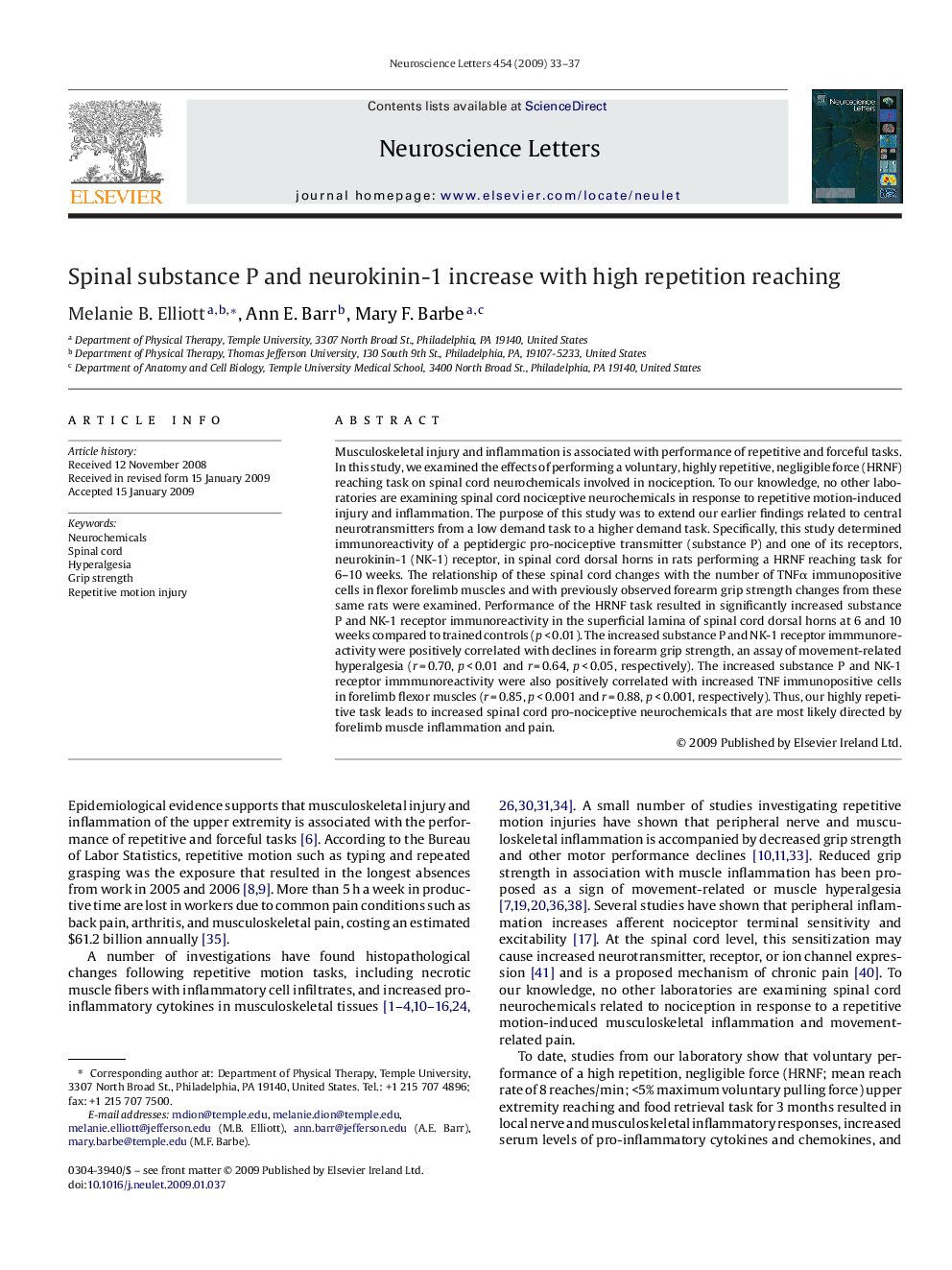| کد مقاله | کد نشریه | سال انتشار | مقاله انگلیسی | نسخه تمام متن |
|---|---|---|---|---|
| 4347287 | 1296831 | 2009 | 5 صفحه PDF | دانلود رایگان |

Musculoskeletal injury and inflammation is associated with performance of repetitive and forceful tasks. In this study, we examined the effects of performing a voluntary, highly repetitive, negligible force (HRNF) reaching task on spinal cord neurochemicals involved in nociception. To our knowledge, no other laboratories are examining spinal cord nociceptive neurochemicals in response to repetitive motion-induced injury and inflammation. The purpose of this study was to extend our earlier findings related to central neurotransmitters from a low demand task to a higher demand task. Specifically, this study determined immunoreactivity of a peptidergic pro-nociceptive transmitter (substance P) and one of its receptors, neurokinin-1 (NK-1) receptor, in spinal cord dorsal horns in rats performing a HRNF reaching task for 6–10 weeks. The relationship of these spinal cord changes with the number of TNFα immunopositive cells in flexor forelimb muscles and with previously observed forearm grip strength changes from these same rats were examined. Performance of the HRNF task resulted in significantly increased substance P and NK-1 receptor immunoreactivity in the superficial lamina of spinal cord dorsal horns at 6 and 10 weeks compared to trained controls (p < 0.01). The increased substance P and NK-1 receptor immmunoreactivity were positively correlated with declines in forearm grip strength, an assay of movement-related hyperalgesia (r = 0.70, p < 0.01 and r = 0.64, p < 0.05, respectively). The increased substance P and NK-1 receptor immmunoreactivity were also positively correlated with increased TNF immunopositive cells in forelimb flexor muscles (r = 0.85, p < 0.001 and r = 0.88, p < 0.001, respectively). Thus, our highly repetitive task leads to increased spinal cord pro-nociceptive neurochemicals that are most likely directed by forelimb muscle inflammation and pain.
Journal: Neuroscience Letters - Volume 454, Issue 1, 17 April 2009, Pages 33–37